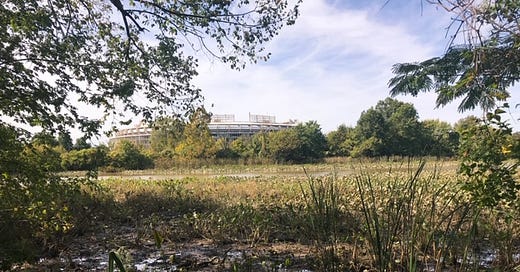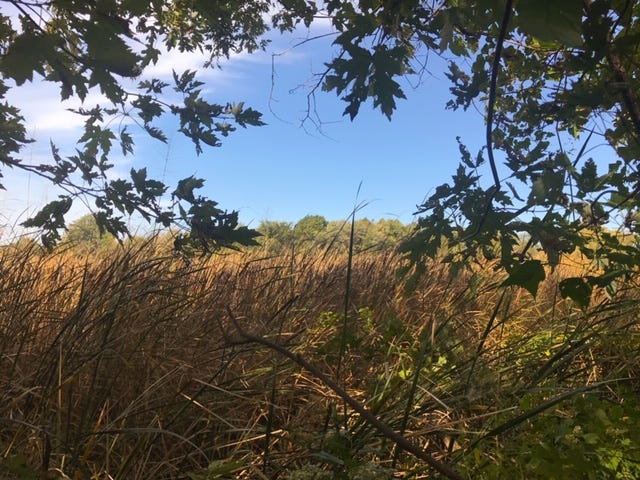Louder on the Outside Than the Inside
[I haven’t been feeling very well this weekend — nothing dramatic, just a sinus infection I think — so I’m recycling something I wrote last fall. You’ll be able to tell because there are leaves on the trees. :)]
I took a couple of walks this past weekend to Kingman Island. I like the island because it feels so much like the children’s book, the Secret Garden: You access the island – a set of islands, really -- from the vast, empty wastelands of a rusting, mostly-abandoned stadium. Soccer games are held there now, and there’s a never-ending debate about what should be done with the land. The city’s built some new baseball fields for kids, some new spaces for outdoor activities. And then you drive some more, and in the early morning maybe there’s no one else parked there. There’s no spaces painted on the cracked concrete even, you just pull up acting for all the world like you’re looking to get high, but instead you emerge into the grey dawn, get out your camera, step into the dew.
I think about how long life is, how many turning points there are, when I park at Kingman Island.
And it is loud right there, right by the parking lot. You can’t see the entrance to the park, you have to walk a little ways along a bike path, then turn to the left. That side strip outside of the park is this semi-mowed wet area, and no one ever sets foot into the bog — they just walk or bike by it on the paths, on the way to the parking lot or the park or as exercise. There is nothing exciting about the overgrown area next to the path & blocking your view of the river, but if you listen to it, it is full of the voices of — I think — little frogs and little insects & little birds. Little lives going forth and expiring and regenerating under cover of all that bush.
In the park there’s much of the same of course but it’s just a little different — there are people coming through for one thing, children in strollers and their caretakers — and of course the children get everywhere, that’s their job, and the dogs, the dogs get everywhere too, because that’s also their job, and sometimes also the park people with blowers or mowers maintaining the trail. The point is not that one place is wild and the other place isn’t — neither of them is wild — but that they’re not-wild in different ways, and that even though they’re so close to each other, you can hear the difference in the animals — bigger, louder frogs by the river, a cacophony of tiny frogs in the impenetrable wet overgrowth by the path.
Kingman Island always makes me think about how much animals enjoy the built environment — indeed, how we may be fooling ourselves to imagine any environment as “unbuilt” or “pristine” or “truly wild.” All environments we are in have us in them, end of story. To imagine otherwise is like being an addict who imagines they can run away from their addiction by moving, only to realize they have brought their addiction along with them. Their addiction is part of them; our built environment is part of us. How we build, how we live in the environment is the only question, not if we build or if we will live in the environment.
If you enjoyed this post, please share it with your nature-loving mates.





